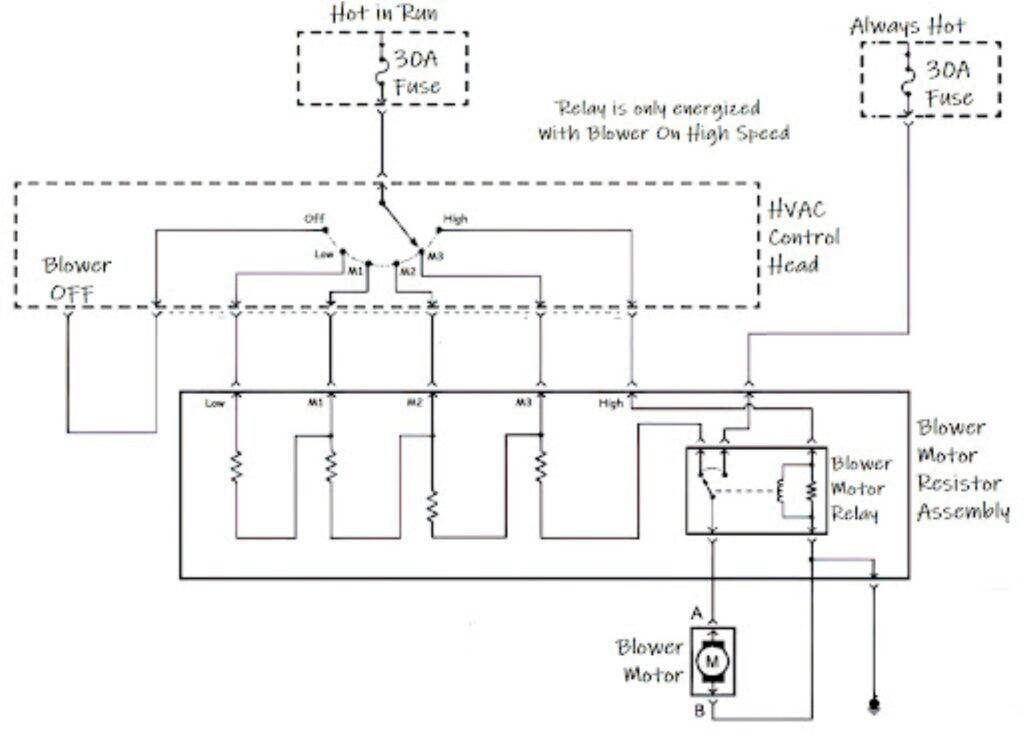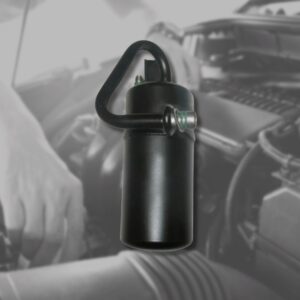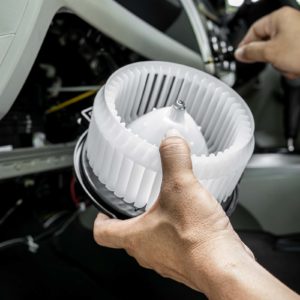The blower motor is an important part of your vehicle’s air-conditioning system. It’s responsible for pushing air into the cabin through the vents. It’s controlled by the fan control switch and blower motor relay, which are responsible for managing the amount of voltage the blower motor receives, allowing it to function at different speeds.
In older cars, when you turn the fan control switch to the lower settings, such as low or medium, the current passes through a block of resistors before reaching the motor. The resistors regulate the flow of current, allowing you to control the blower fan speed.


Symptoms of a Bad Blower Motor Relay
On platforms where the blower is directly controlled by the switch rather than a module, the relay will cause the blower not to work at all, which means there will be no airflow across the evaporator, and the effect will be the same as the A/C not working at all.
On Chevy platforms,, a faulty blower relay will cause the blower not to work on “high blow” but all the other speeds will work. If the blower relay on one of these sticks is closed, the blower will always run on “high blow” as long as the key is on.


Because the relay’s secondary (load carrying) terminals carry so much current, sometimes the relay and/or blower resistor terminals will oxidize and melt their connectors.
This happens more often to the blower resistor than it does to the relay. The fan motor connector shown in the photo is an example of the oxidizing and burning that takes place sometimes on a high current circuit like the blower fan or a radiator cooling fan.
How Does the Blower Motor Relay Work?
When you turn the fan control switch to its most powerful setting, it will send a small electric current that will activate the blower motor relay. The blower motor relay has a small electromagnetic coil between the primary (trigger) terminals on the relay.
The core of this coil is soft iron and becomes a powerful magnet that pulls the secondary (load carrying) contacts together. Thus, the relay is basically an electromagnetic switch. The blower motor is a hard working component that is supposed to last the life of the vehicle but sometimes fails.
Why Does the Blower Motor Relay Fail?
The relay is often partnered with a fuse. If there’s a power surge, then the fuse will sever the circuit and prevent the power surge from reaching the blower motor.
Like any other relay, the blower motor relay regularly deals with high current loads. As a result, it can overheat and eventually melt, resulting in the relay fusing itself into the fuse box.
How Much Does a Replacement Blower Motor Relay Cost
Most blower motor relays cost around 15$ to $60. Their prices mostly depend on the make and model of the vehicle that they’re made for.
Finding a Replacement Blower Motor Relay For Your Ride
It’s best to get your vehicle checked by a mechanic right away if you suspect that it has a failed blower motor relay. Thankfully, you can get a replacement that fits your vehicle with the help of CarParts.com.
You won’t even have to take one step outside your door to get yourself a brand-new relay. All you need to do is visit our website and use your vehicle selector. Just be sure to input the year, make, and model of your vehicle to check out the compatible parts for your ride.
We make it a point to source our auto components from some of the most reliable names in the industry. With our warehouses strategically located all over the US, you’ll receive your order in just a few days.
No good can come from waiting too long before replacing a bad blower motor relay. Browse our collection of high-quality parts, and place your order today!
Any information provided on this Website is for informational purposes only and is not intended to replace consultation with a professional mechanic. The accuracy and timeliness of the information may change from the time of publication.





























